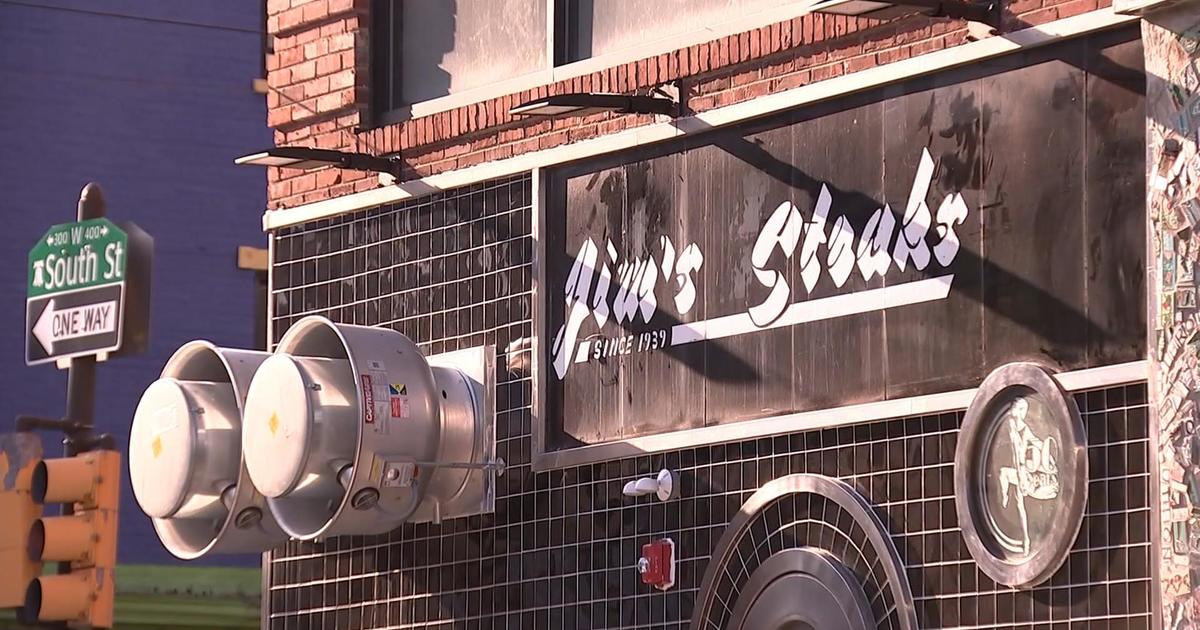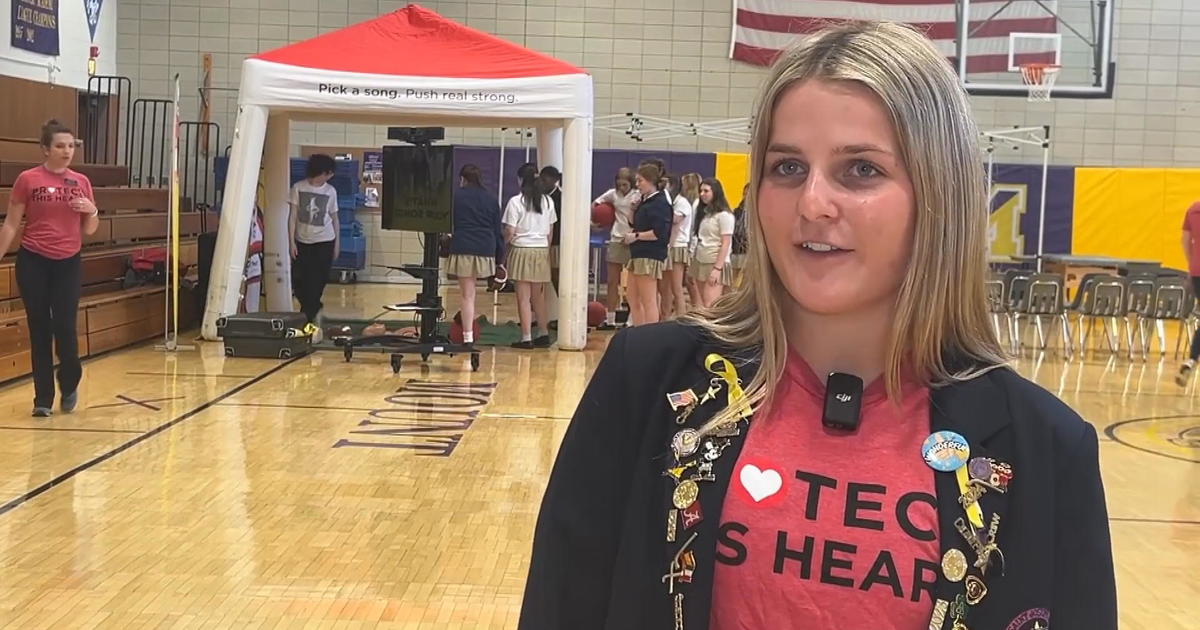Teen Drug Use Is Down, Survey Says
By Susan Scutti
PHILADELPHIA (CNN) -- Today's teens are less likely to be taking drugs than their predecessors, a survey says.
The 2016 Monitoring the Future survey showed a continuing decline in the use of illicit substances -- marijuana, alcohol and tobacco -- and misuse of prescription drugs among teens.
The annual survey, which has been conducted since 1975, measures attitudes and substance use among eighth-, 10th- and 12th-graders.
Overall, 45,473 students from 372 public and private schools participated in this year's survey, funded by the National Institute on Drug Abuse.
Illicit drug use over the past year was the lowest in the survey's history for eighth-graders. In all three grades, use of illegal drugs other than marijuana over the past year dropped from recent peaks. (Seniors have been polled about their drug use and attitudes since 1975; eighth- and 10th-graders were added in 1991.)
"This is very, very good news," said Dr. Nora Volkow, director of the National Institute on Drug Abuse. "We are seeing some of the lowest rates of drug use we've ever encountered in our survey, and that is for cocaine, amphetamines, heroin, inhalants."
Samuel Ball, president and CEO of the National Center on Addiction and Substance Abuse at Columbia University, also feels encouraged by the results, though he is unsurprised by the general decline.
"These decreasing use trends have been found in national surveys over the past 10 years," he said.
Volkow emphasized that the rates for alcohol and nicotine are the "lowest ever seen," while "in the case of nicotine, reductions have been very dramatic: fourfold decreases over a period of 10 or 15 years."
In 1991, for instance, more than one in 10 high school seniors smoked a half-pack or more a day, while the most recent survey finds that rate has dropped to 1.8%.
Though she's generally pleased, Volkow remains concerned about marijuana.
Marijuana concerns
Some positive news comes from the youngest participants. Past-month use of marijuana among eighth-graders decreased to 5.4% in 2016 from 6.5% in the previous year. Daily use among eighth-graders slipped below last year's 1.1% level to 0.7%.
However, older students are following a different trend line: Rates of marijuana use in the past year among 10th-graders remained stable compared with 2015. Among seniors, rates also remained relatively unchanged, the survey found.
More than 22% of high school seniors reported past-month marijuana use, and 6% reported daily use for this year.
These figures are troubling, noted Volkow, who explained that regular use of marijuana is associated with adverse effects such as dropping out of school.
Routine use is also "more likely to have deleterious effects for brain development," she said, adding that teen brains are still developing.
Ball said there's another possible danger when teens smoke cannabis every day.
"Daily use of any substance, including marijuana, places individuals at high risk for addiction," he said. "And this risk is significantly higher for teen users than adult users."
As some feared, higher rates of marijuana use among 12th-graders could be seen in states with medical marijuana laws than in states without them, the survey revealed.
In 2016, just over 38% of high school seniors living in states with medical marijuana laws reported past-year marijuana use, compared with just over 33% of seniors in states without these laws.
Though changes in legalization have led to easier access, the altered legal landscape also means "the perception that marijuana is safe has increased among people of all ages, including teenagers," said Volkow.
"In general, we have seen that the more teens felt that marijuana was harmless -- we've seen this throughout the survey -- the more likely they were to smoke marijuana," she said.
Because there's been a general decrease in the perception of harm from marijuana, she expected to see an overall uptick in marijuana use among teenagers. "But we haven't seen it," said Volkow.
While daily use rates have remained stable over the past few years, "the potential worsening of this by increased legalization in many states and lax attitudes across the country remains worrisome," noted Ball.
Both Volkow and Ball emphasized that increasing use of cannabis may have skipped younger teens, but the same is not true for late teens and early adults. Among the 18- to 24-year-old group, rates are rising.
The newest threat
E-cigarettes have rapidly grown in popularity among teens, Volkow said.
"It's a new technology that allows you to deliver a drug into the brain very, very rapidly and at very high concentration," Volkow said.
As a result, she explained, e-cigarettes are very effective at maximizing the rewarding effects of any drug and therefore its addictive potential.
The survey began to track e-cigarettes for the first time last year. "We were immediately surprised by how high the rate of use of e-cigarettes was," Volkow said.
E-cigarettes are more popular than conventional cigarettes, the report found. Past-month usage rates among 12th-graders are 12.5% for vaporizers and 10.5% for cigarettes. However, this year's survey finds a decline in use from last year's rate of 16.3% among seniors.
Still, the main issue with e-cigarettes is the possibility they will lead to conventional cigarettes, explained Volkow. "There's evidence out there to suggest that indeed smoking e-cigarettes with nicotine increases the likelihood that you will then transition into combustible tobacco."
Only a quarter of 12th-graders think their vaporizers contain nicotine, the addictive ingredient in tobacco, with 62.8% claiming they contain "just flavoring." Six percent of seniors say they vape for flavoring, 20% report using e-cigarettes for nicotine, and 8% or less use it for cannabis, said Volkow. Some report not knowing what they are smoking.
"It's very likely that instances where teenagers are sharing an e-cigarette among themselves, they are very likely to not know what's in there," Volkow said.
A social media-based trend?
As adults are experiencing high rates of opioid drug and heroin use, Volkow feared a similar pattern among teenagers. Happily, she said, that has not occurred.
Nonmedical use of all opioid pain relievers among 12th-graders during the past year is at 4.8%, down significantly from a peak of 9.5% in 2004. And just 0.3% of high school seniors reported shooting heroin some time over the past year.
"This was very surprising, because the price of heroin has gone down, and teenagers are very susceptible to the cost," Volkow said, adding that availability is much greater, too.
So why are this year's results so positive?
Volkow said these trends have been seen in other surveys.
"There's data to show that nicotine primes the brain for reinforcing effects of other drugs," she said. With low smoking rates, "you don't have those priming effects," and so teens are less likely to be taken in by other drugs.
Volkow said she also wants to investigate whether changes in the way teens interact might be driving the decreasing consumption of drugs. More social media could mean less face-to-face socializing, which could lead to less direct peer pressure, she said.
Ball said his biggest concerns about reduced teen drug use are that "we, as a society, may feel a false sense of complacency or falsely believe that we do not need as much substance-use prevention programming in schools and communities."
"Constant vigilance to the problem of teen substance use is essential to prevent harm, addiction, crime, school failure, overdose and family heartbreak," Ball said.
The-CNN-Wire ™ & © 2016 Cable News Network, Inc., a Time Warner Company. All rights reserved.



